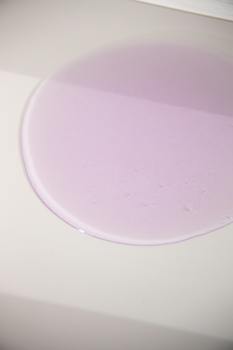

-
Table of Contents
Separating DNA Fragments by Size: Gel Electrophoresis - Unveiling Genetic Secrets
Introduction
Introduction: Gel electrophoresis is a widely used technique in molecular biology that allows for the separation of DNA fragments based on their size. This technique utilizes an electric field to move charged DNA molecules through a gel matrix, with smaller fragments migrating faster and traveling further than larger ones. By visualizing the separated fragments, scientists can analyze and study various aspects of DNA, such as genetic mutations, gene expression, and DNA sequencing. Gel electrophoresis has revolutionized the field of molecular biology and continues to be an essential tool in genetic research and diagnostics.
Understanding the Basics of Gel Electrophoresis for DNA Fragment Separation
Gel electrophoresis is a widely used technique in molecular biology for separating DNA fragments by size. It is an essential tool in many areas of research, including genetics, forensics, and medical diagnostics. Understanding the basics of gel electrophoresis is crucial for anyone working with DNA analysis.
The principle behind gel electrophoresis is relatively simple. DNA fragments are negatively charged due to the phosphate groups in their backbone. By applying an electric field to a gel matrix, the DNA fragments can be separated based on their size. The gel matrix acts as a sieve, slowing down the movement of larger fragments and allowing smaller fragments to migrate faster.
To perform gel electrophoresis, a gel is prepared by mixing a powdered agarose or polyacrylamide with a buffer solution. Agarose gels are commonly used for separating larger DNA fragments, while polyacrylamide gels are preferred for smaller fragments. The gel is poured into a casting tray and allowed to solidify, creating a matrix with tiny pores.
Once the gel has solidified, it is placed in an electrophoresis chamber filled with a buffer solution. The buffer solution provides ions that carry the electric current and maintain a stable pH. The gel is submerged in the buffer, and a comb is inserted at one end to create wells for loading the DNA samples.
The DNA samples are prepared by mixing them with a loading dye, which contains a tracking dye that migrates at a known rate. The loading dye not only helps visualize the DNA migration but also adds density to the samples, allowing them to sink into the wells. The samples are carefully loaded into the wells using a micropipette.
Once the samples are loaded, an electric current is applied to the gel. The negatively charged DNA fragments migrate towards the positive electrode, which is usually located at the opposite end of the gel. The migration rate of each fragment depends on its size, with smaller fragments moving faster and larger fragments moving slower.
After a suitable period of time, typically a few hours, the gel electrophoresis is stopped, and the DNA fragments are visualized. This can be done by staining the gel with a fluorescent dye that binds to DNA, such as ethidium bromide. The dye intercalates between the DNA base pairs, allowing the fragments to be seen under ultraviolet light.
The DNA fragments appear as bands on the gel, with the smallest fragments migrating the farthest and the largest fragments staying closest to the wells. By comparing the migration distances of the DNA fragments with known size markers, the size of unknown fragments can be estimated.
Gel electrophoresis can also be used to separate DNA fragments based on other properties, such as their charge or conformation. For example, in denaturing gel electrophoresis, the DNA is treated with a denaturing agent, such as urea, to disrupt the hydrogen bonds between the base pairs. This allows the separation of single-stranded DNA fragments based on their size.
In conclusion, gel electrophoresis is a powerful technique for separating DNA fragments by size. By exploiting the electrical properties of DNA, researchers can obtain valuable information about the size and composition of DNA samples. Understanding the basics of gel electrophoresis is essential for anyone working in the field of molecular biology, as it is a fundamental tool for DNA analysis.
Step-by-Step Guide to Performing Gel Electrophoresis for DNA Fragment Separation

Gel electrophoresis is a widely used technique in molecular biology that allows scientists to separate DNA fragments by size. This technique is essential for many applications, such as DNA sequencing, genetic fingerprinting, and gene expression analysis. In this article, we will provide a step-by-step guide to performing gel electrophoresis for DNA fragment separation.
The first step in gel electrophoresis is to prepare the gel. Agarose, a polysaccharide derived from seaweed, is commonly used to make the gel. Agarose powder is dissolved in a buffer solution, typically Tris-acetate-EDTA (TAE) or Tris-borate-EDTA (TBE), and heated until it becomes a clear liquid. The liquid agarose is then poured into a gel tray and allowed to solidify.
Once the gel has solidified, it is placed in an electrophoresis chamber filled with the same buffer solution used to make the gel. The chamber has two electrodes, a positive electrode (anode) and a negative electrode (cathode), which are connected to a power supply. The gel is positioned so that the wells, small indentations made in the gel, are closer to the negative electrode.
Next, the DNA samples to be separated are prepared. The DNA is typically extracted from cells or tissues using various methods, such as phenol-chloroform extraction or commercial DNA extraction kits. The DNA is then mixed with a loading dye, which contains a tracking dye that helps visualize the movement of the DNA during electrophoresis.
The DNA samples are loaded into the wells of the gel using a micropipette. It is important to load a DNA ladder, which contains DNA fragments of known sizes, in one of the wells. The ladder serves as a reference for determining the sizes of the DNA fragments being separated.
Once the samples are loaded, the power supply is turned on, and an electric current is applied. The negatively charged DNA molecules migrate towards the positive electrode due to the electric field. The smaller DNA fragments move faster through the gel matrix, while the larger fragments move more slowly. This differential migration results in the separation of the DNA fragments based on size.
After a suitable period of time, typically a few hours, the power supply is turned off, and the gel is removed from the electrophoresis chamber. The gel is then stained with a DNA-specific dye, such as ethidium bromide or SYBR Green, which binds to the DNA and allows it to be visualized under ultraviolet (UV) light.
The stained gel is placed on a UV transilluminator, and the DNA bands are observed. The ladder bands serve as a reference for estimating the sizes of the DNA fragments in the other lanes. The gel can be photographed or documented using specialized gel documentation systems.
In conclusion, gel electrophoresis is a powerful technique for separating DNA fragments by size. By following this step-by-step guide, scientists can perform gel electrophoresis and obtain valuable information about the sizes of DNA fragments. This technique is essential for various applications in molecular biology and has greatly contributed to our understanding of genetics and genomics.
Applications and Advancements in Gel Electrophoresis for DNA Fragment Separation
Applications and Advancements in Gel Electrophoresis for DNA Fragment Separation
Gel electrophoresis is a widely used technique in molecular biology that allows scientists to separate DNA fragments by size. This technique has revolutionized the field of genetics and has numerous applications in various areas of research. Over the years, advancements in gel electrophoresis have further enhanced its efficiency and accuracy, making it an indispensable tool for scientists.
One of the most common applications of gel electrophoresis is in DNA fingerprinting. This technique is used to compare DNA samples from different individuals and determine their genetic relatedness. By separating DNA fragments based on their size, scientists can create unique patterns, or fingerprints, for each individual. These fingerprints can then be used to identify individuals, solve crimes, and establish paternity.
Another important application of gel electrophoresis is in the study of genetic diseases. Many genetic disorders are caused by mutations or changes in specific genes. By analyzing DNA fragments using gel electrophoresis, scientists can identify these mutations and gain a better understanding of the underlying genetic mechanisms of these diseases. This knowledge can then be used to develop targeted therapies and treatments.
In addition to its applications in genetics, gel electrophoresis is also used in the field of forensics. DNA evidence is often crucial in criminal investigations, and gel electrophoresis plays a vital role in analyzing and interpreting this evidence. By separating DNA fragments from crime scene samples and comparing them to known DNA profiles, scientists can provide valuable information that can help solve crimes and bring perpetrators to justice.
Advancements in gel electrophoresis have significantly improved its efficiency and accuracy. One such advancement is the development of polyacrylamide gels, which offer higher resolution and better separation of DNA fragments compared to traditional agarose gels. Polyacrylamide gels are particularly useful when analyzing small DNA fragments or when high resolution is required.
Another advancement in gel electrophoresis is the use of fluorescent dyes or tags to label DNA fragments. These dyes emit fluorescence when exposed to specific wavelengths of light, allowing scientists to visualize and analyze DNA fragments more easily. This technique, known as fluorescent gel electrophoresis, has greatly enhanced the sensitivity and specificity of DNA fragment separation.
Furthermore, the introduction of automated gel electrophoresis systems has revolutionized the field. These systems use robotics and computer software to automate the entire process, from sample loading to data analysis. This not only saves time and effort but also reduces the risk of human error, ensuring more reliable and reproducible results.
In conclusion, gel electrophoresis is a powerful technique for separating DNA fragments by size, with numerous applications in various fields of research. From DNA fingerprinting to the study of genetic diseases and forensic analysis, gel electrophoresis has proven to be an invaluable tool for scientists. Advancements in this technique, such as the use of polyacrylamide gels, fluorescent dyes, and automated systems, have further improved its efficiency and accuracy. As technology continues to advance, it is likely that gel electrophoresis will continue to play a crucial role in advancing our understanding of genetics and contributing to various scientific discoveries.
Q&A
1. What is gel electrophoresis?
Gel electrophoresis is a technique used to separate DNA fragments based on their size using an electric field applied to a gel matrix.
2. How does gel electrophoresis separate DNA fragments?
DNA samples are loaded into wells in a gel matrix, and an electric current is applied. The negatively charged DNA fragments migrate through the gel towards the positive electrode, with smaller fragments moving faster and traveling further than larger fragments.
3. What is the purpose of separating DNA fragments by size using gel electrophoresis?
Separating DNA fragments by size allows scientists to analyze and compare DNA samples. It is commonly used in various applications such as DNA sequencing, genetic fingerprinting, and studying genetic mutations.
Conclusion
In conclusion, gel electrophoresis is a widely used technique for separating DNA fragments based on their size. It involves the use of an electric field to move the DNA molecules through a gel matrix. Smaller fragments move faster and travel further, while larger fragments move slower and remain closer to the origin. This technique is crucial in various fields of research, such as genetics, forensics, and molecular biology, as it allows scientists to analyze and compare DNA samples based on their size and molecular weight. Gel electrophoresis has revolutionized the study of DNA and has become an essential tool in many scientific disciplines.











